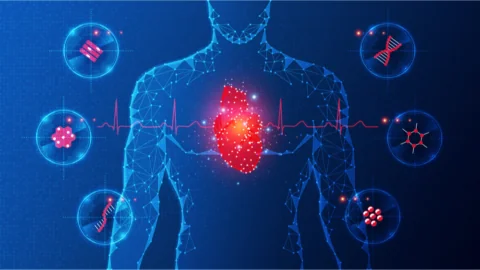January 09, 2024
A new review authored by three acclaimed geroscientists paints a promising picture of past and ongoing human clinical trials of prospective anti-aging drugs [1]. From worms and mice to humans The biology of aging is an exciting new field, but most of its successes have been in animal models, from the early breakthroughs in yeast...
October 02, 2023
Combining human clinical trial research, cellular analysis, and mouse studies, researchers publishing in the Nature journal Signal Transduction and Targeted Therapy have discovered a relationship between NAD+, hypertension, and the immune signal CD38. A vital component in metabolic function Nicotinamide Adenine Dinucleotide (NAD): Benefits and ResearchNicotinamide adenine dinucleotide (NAD) is a coenzyme found in all...
September 27, 2023
In a recent paper, researchers reviewed the literature for human clinical trials that address NMN's safety and anti-aging effects [1]. The roles of NAD+ and NMN in aging Nicotinamide mononucleotide (NMN): Benefits and Side EffectsNicotinamide mononucleotide (NMN) is a precursor of the coenzyme NAD+, which serves critical functions in our cells. The decline of NAD+...
August 17, 2023
Researchers publishing in Biogerontology have tested multiple biomarkers in an effort to use them as proxies for aging, and some of their findings were surprising. A simple study with direct measurements Unlike other association studies that are used to evaluate biomarkers of aging, this study did not use data from a pre-existing biobank or related...
March 03, 2023
Researchers publishing in Aging Cell have elucidated a relationship between aging, the loss of smell, and NAD+ in a mouse model. Olfactory ability declines with age Roughly half of people over the age of 65 experience a decreased ability to smell [1], and research has shown that it is an early biomarker for neurodegenerative diseases,...
February 17, 2023
Scientists have shown that long-term treatment with a popular NAD+ precursor can raise NAD+ levels in blood and muscle and increase mitochondria content and function [1]. Twin-based design NAD+ is an important coenzyme that performs multiple functions, including mitochondrial energy production. NAD+ levels decrease with aging, which has been shown to underlie other age-related diseases....






